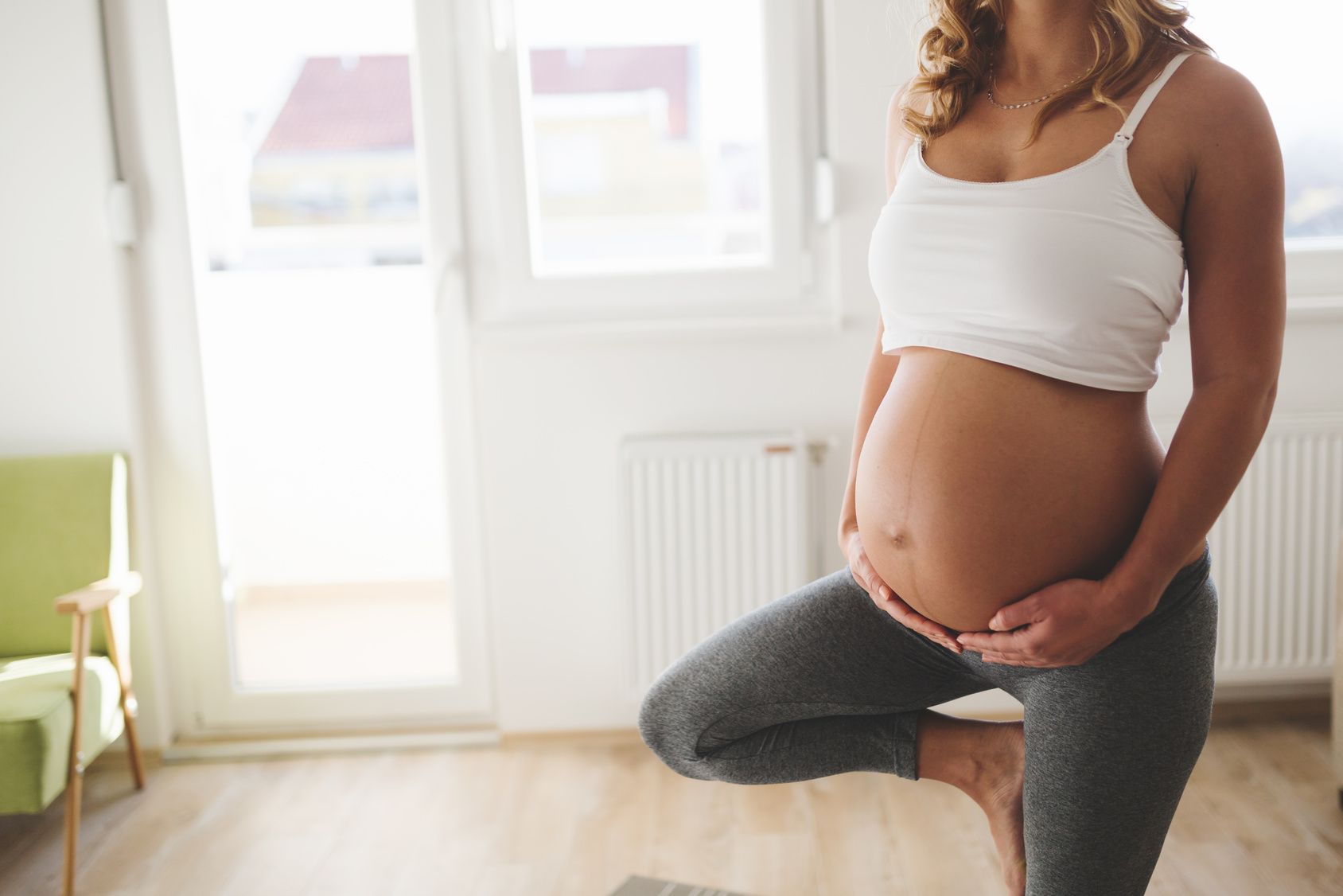Start pelvic floor exercises now for an easier labor and to reduce the chance of overactive bladder symptoms after birth.

Many of my patients report that after getting pregnant and having kids, their body doesn’t seem to work the same way it used to. In particular, many notice changes in their urinary habits, such as having to use the bathroom more often or experiencing urinary leakage.
Some women may think these changes are just part of life. In actuality urinary leakage or incontinence are usually caused by a weakened pelvic floor.
The pelvic floor is the muscles and ligaments that support your pelvic organs, including your bladder, uterus, vagina and rectum. Parts of the pregnancy and birthing process put pressure on the pelvic muscles, which can lead to changes in when and how often you use the bathroom.
For instance, as the baby is “crowning” during labor, which is when the head is visible even after contractions have stopped, your pelvic floor is under enormous pressure. Even after birth, this stress can have lasting effects on the strength of your pelvic floor.
The added stress on the pelvic muscles from the baby is not the only factor that can cause an overactive bladder (OAB) after birth. According to the American Congress of Obstetricians and Gynecologists, 3 out of 4 women will experience constipation during pregnancy. This also increases the strain on the pelvic floor and its muscles.
These facts might sound scary to expectant mothers and those looking to get pregnant, but don’t stress out just yet. There are things you can do to help ease labor and reduce your chances for OAB symptoms, which include a sudden and strong urge to urinate, leaking large amounts of urine, and frequent need to urinate day or night.
In fact, you probably know about the exercises to build stronger pelvic floor muscles, but you may not know you know them. They’re called Kegels, the exercises you do to prevent pelvic floor prolapse and other issues you want to avoid that usually come later in life.
If you are pregnant or planning to become pregnant in the future, start becoming faithful with your Kegels now to get the best results.
Besides these side effects of pregnancy, weakened pelvic floor muscles and the added stress of constipation contribute to the overwhelming evidence that links pregnancy and a vaginal delivery to urinary incontinence, fecal incontinence and pelvic organ prolapse. These things can start during the pregnancy, and many expectant women unintentionally leak a little pee when they cough or sneeze.
Don’t worry, start Kegels
Kegels should be done much like any exercises you are doing to try to strengthen a muscle. It is important to do them in sets, letting the muscle rest in between. Also, the more frequently you are working the muscle, the faster you will get results. So don’t do one set and quit for the day.
It is key to set a realistic expectation for yourself when you are setting pelvic floor workout goals. If you know that you are busy and finding time for yourself is hard, make a goal to do Kegels two times a week. If you are gung ho about starting Kegels and know that you can make time every day, that is great. You will see quicker results.
Every person’s Kegel schedule will be different. So it is important to not set yourself up for disappointment by setting a realistic goal for yourself.
It’s essential that you must continue working out your muscles to maintain the strength in your pelvic floor. Once you hit your desired strength, you will be able to reduce the amount of time you spend on them each week. Each individual is looking for different results, so it is difficult to determine an ideal strength for all women.
But if you stop all together, your pelvic floor strength will be lost over time. So don’t stop.
For the more extreme cases when Kegels are not working, we refer to the University of Colorado physical therapy department. They have two physical therapists who specialize in pelvic floor exercises.
For additional information on Kegels you can read this article on Dr. Oz’s The Good Life website. In addition to what I contributed as a source, there’s more good information on Kegels there.
Are your pelvic floor exercises during pregnancy working?
If you were experiencing OAB symptoms and they have improved, that would indicate that the Kegel exercises are working for you. If you were not previously experiencing overactive bladder symptoms it will be harder to determine if the Kegel exercises are working.
Expectant mothers who have been doing their Kegels during their pregnancy can expect to see the following results:
- Improved ability to relax the muscles while the baby’s head is crowning
- Easier healing of the area between your vagina and anus (the perineum) after birth
- Reduction or absence of overactive bladder symptoms
- Increased chances of achieving an orgasm during sex, both while pregnant and after.
Once your child is born, continue to do your Kegel exercises. You might get pregnant again. And even if not, a woman should always include Kegels in her workout routine to keep the pelvic floor strong and properly functioning for her whole life.
University of Colorado Urogynecology is a specialty women’s health practice focused on female pelvic health and surgery. Our physicians are also professors & researchers for the CU School of Medicine, one of the top-ranked medical schools in the nation.